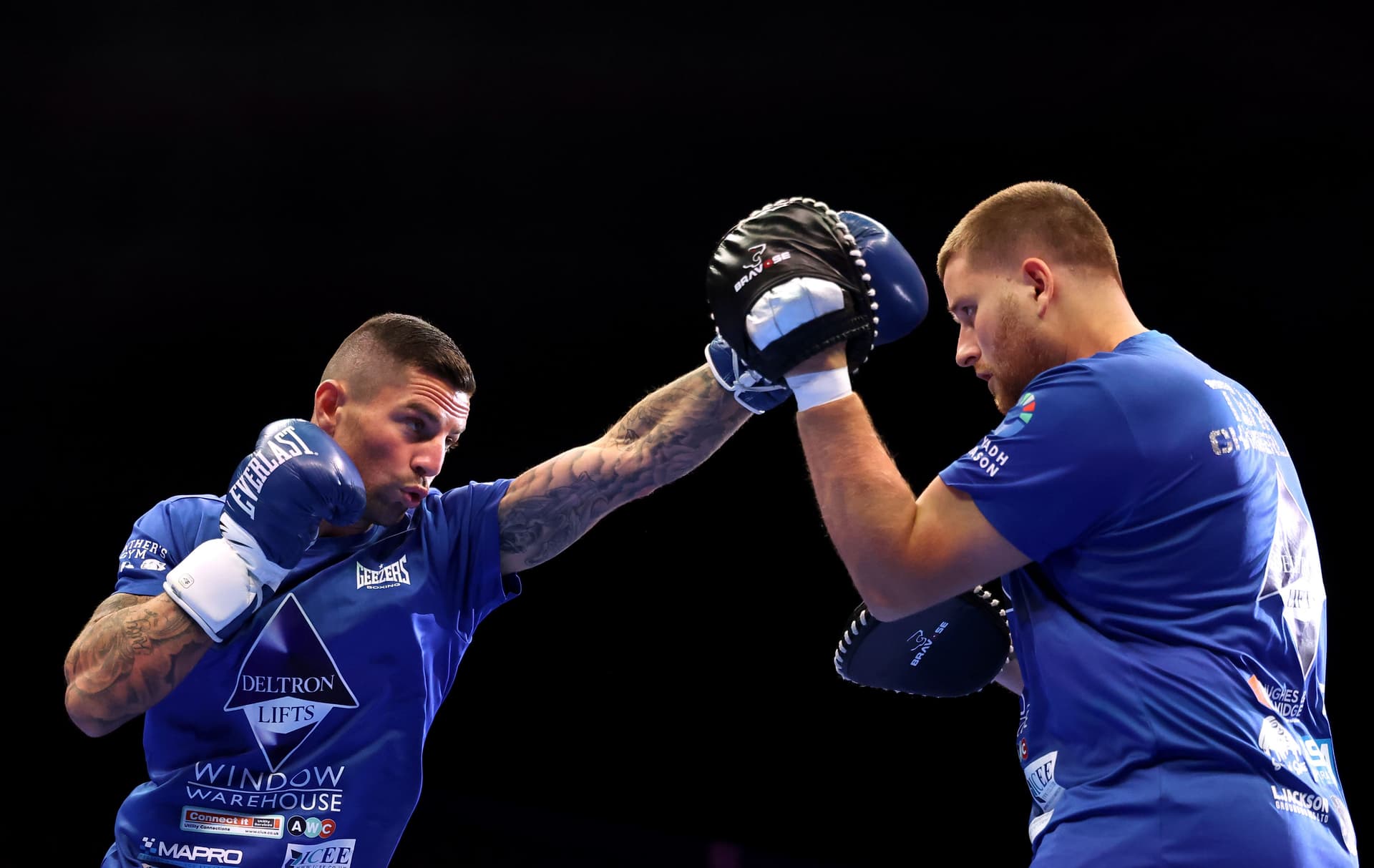Boxing
Want To Get In Shape? Find Out Why Boxing Is a Good Workout
Boxing is one of the best workouts of all sports, but what makes it so effective for fitness?

Image Credits: Richard Pelham/Getty Images
What makes boxing such a good workout?
There’s a reason why boxers in their peak form are so sculptured, strong and lean, and that’s because the sport is one of the most demanding in the world.
Boxing is a great workout for both cardio and strength. It’s estimated to be around 75% anaerobic and 25% aerobic. These two systems can be simplified as one that operates without free oxygen (anaerobic), such as sprinting, weightlifting; and one with oxygen readily available (anaerobic), such as running, swimming, cycling.
If you are looking for a sport that helps with weight-loss, fitness and strength, then look no further than boxing.
The high intensity of the workouts, accompanied by the cardio, will help burn calories, while increasing stamina and strength.
Read on to find out all about boxing workouts and how each activity will benefit you.
Boxing Workouts
Boxing is not just about punching, there’s a myriad of various activities involved that will immensely benefit the body in all different ways. There is a lot required in building a boxer, which you can see from the list below.
Skipping – Being able to master the jump rope is great for cardio, as well as balance, co-ordination and footwork. Boxers use the rope to sharpen their footwork and agility, whilst also increasing stamina and endurance.
To increase the intensity, you can lift your legs higher and skip faster, which will provide more of anaerobic workout.
Shadow Boxing – This is an important aspect of boxing training as it simulates fighting. Shadow boxing allows the boxer to throw punches, practise combinations, work on technique, as well as their movement, including the feet, upper body and head.
To enhance intensity, you just throw a higher volume of punches, increase speed and move more.
Heavy Bags – The heavy bags are the best kit in the gym for a boxer because it allows them to simulate what goes on in the ring, but alone. Everything that’s required in shadow boxing is simply transferred to now having a bag to land those punches on.
Boxers should still work on their punches and combinations, technique and movement. To get the best out of a heavy bag workout, the boxer should work their way around the bag, to replicate the fight as much as possible, so landing a punch or combination the moving to different part of the bag, just like in a fight.
To up the intensity of the workout, throw more, move more, and speed it all up.
Speed Ball – The speed ball is quite different as a piece of kit. It requires standing still underneath a small boxing bag, which you use very quick hands held high above your head to hit back and forth. This particular piece of training equipment is designed to sharpen hand-eye coordination and increase stamina in the arms.
Hand Pads – For this exercise, it requires a trainer or a partner to hold up two cushioned pads and to instruct the boxer to punch in combinations. This can be taken as lightly or as intense as required, and it’s great for the boxer because the pace isn’t in their control, so will be pushed to keep up with the instructions. Pad workouts can be very demanding on the body.
Sparring – Sparring is as close to fighting as you can replicate, but it requires a partner. Sparring is used by professional boxers to prepare for fights.
There’s several different ways to spar; for example, technical sparring is used for boxers to learn and practise, without being intense, so it could involve one boxer jabbing while the other defends, then vice-versa. Light sparring is designed for boxers to spar in the safest environment where neither one loads up on their punches, avoiding anyone getting hurt. There’s also body sparring where boxers are only permitted to land body shots, no head shots at all. Full contact sparring will mimic an actual fight the most, as the two opposing boxers can just go at it as they please. Mike Tyson was known for knocking out his sparring partners on a regular basis.
Running – Boxers refer to this as roadwork. Running helps to increase endurance and stamina, which will help enormously when the fight goes to the later rounds. This an aerobic activity within a boxing workout.
For anaerobic work, boxers will use sprints, whether this is on the running track or up a hill. Boxers will incorporate this towards the end of their 8-12 week training camps to add sharpness very shortly before the fight.
Sit-ups – Sit-ups are used by boxers to condition their body as protection from punches. The stronger the muscles surrounding the midriff, the less likely a punch could hurt when landing in that area.
Weights – Weights can be used as part of boxing training to strengthen the key muscles that will be used in boxing, such as the triceps for extending the arms to throw a punch.
Circuits – Boxers benefit hugely from circuit training, which could consist of burpees, squats, squat-thrusts, planks, core, back and abs exercises, leg raises, pull ups, triceps dips and much more.
Example of a Professional Boxer’s Workout
Two-time world champion Carl Froch shared his weekly boxing training regime:
7am – Morning run for 3-5 miles. It’s usually best to run in the mornings when the air is slightly cleaner after cars have been off the road during the night, and the body also burns fat faster earlier in the day.
12-1pm – Strength and conditioning session.
3-6pm – Boxing training session including most of the aforementioned workouts, such as heavy bags, pads, sparring, circuits etc.
Saturdays-Sundays – Extended, slower-paced runs, and rest and recovery time.
This regime is consistently mixed up with alternate versions of the activity, such as morning runs being replaced with track work or hill sprints.
Top 10 Sports for Fitness
Boxing is regularly regarded as the top sport for fitness due to its intensity and broad-spectrum of exercises. It’s a demanding sport that mixes anaerobic and aerobic systems, which results in weight-loss, fitness and strength. Plus, it teaches self-defence and discipline, which is why it’s the best sport for workouts.
Here’s a list of the top 10 sports for fitness:
Top 10 Sports for Fitness
| Rank | Sports |
| 1 | Boxing |
| 2 | Swimming |
| 3 | Martial Arts |
| 4 | Squash |
| 5 | Rowing |
| 6 | Rock Climbing |
| 7 | Basketball |
| 8 | Cross-country Skiing |
| 9 | Running |
| 10 | Cycling |

Tim has over 27 years experience within the sports industry, working for football clubs Arsenal FC and Millwall FC, and boxing news websites British Boxing News, Boxing Social and Global Boxing News. His boxing articles have been published in Boxing News Magazine, national newspapers, plus many other major news outlets.